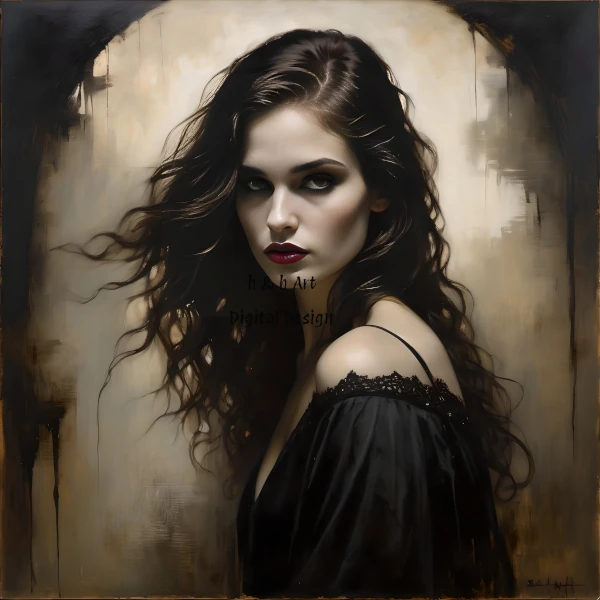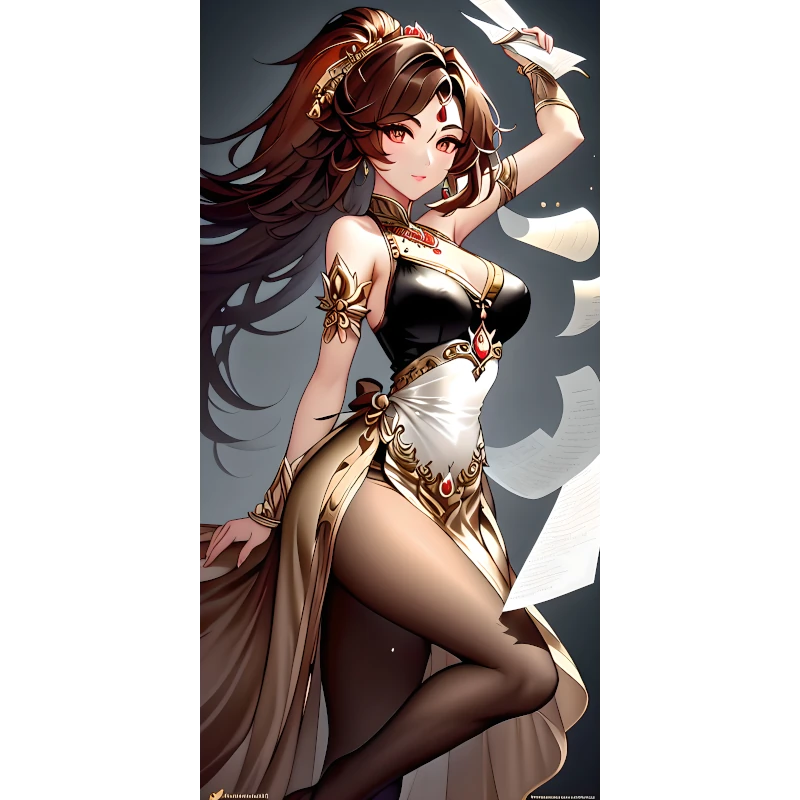How AI Is Changing The Game Of Image Creation In Modern Visual Design
Artificial intelligence is reshaping how images are created, edited, and shared. From generating realistic portraits from text prompts to enhancing image quality with precision, AI enables faster and more flexible creative workflows. AI is changing the game of image creation by making high-quality visual production accessible to anyone, regardless of technical skill or artistic background.
This shift goes beyond convenience. It redefines the relationship between creativity and technology, allowing designers, marketers, and artists to experiment without traditional limits. As AI tools evolve, they integrate into daily creative processes—streamlining design tasks, improving storytelling, and expanding what’s possible in visual communication.
The following sections explore the technologies driving this transformation, the platforms leading innovation, and the ethical challenges that come with it. Together, they show how AI is not just influencing image creation but shaping the future of visual expression itself.
The Core Technologies Powering AI Image Creation
AI-driven image creation relies on several foundational technologies that enable systems to generate, refine, and personalize visual content. These include adversarial network architectures, layered learning models, and algorithms that adapt artistic styles or user preferences into new images.
Generative Adversarial Networks and Neural Networks
Generative Adversarial Networks (GANs) form one of the main engines behind AI image generation. A GAN consists of two neural networks — a generator and a discriminator — that work against each other. The generator creates images, while the discriminator evaluates them against real examples.
Through repeated training cycles, the generator learns to produce images that the discriminator can no longer distinguish from authentic ones. This adversarial process drives continuous improvement in realism and detail.
Modern GAN variants, such as StyleGAN and CycleGAN, enable fine control over facial features, lighting, and image composition. Neural networks also support feature extraction, identifying shapes, edges, and textures that guide the generator’s learning process. Together, these systems allow for consistent, high-quality image synthesis across styles and subjects.
Machine Learning and Deep Learning in Visual Content
Machine learning (ML) and deep learning (DL) provide the computational framework that powers most AI-based image systems. ML models identify patterns within large datasets of photos, artwork, or illustrations, while DL architectures — especially convolutional neural networks (CNNs) — learn hierarchical visual features.
CNNs detect low-level elements such as edges and gradients before combining them into complex structures like faces or landscapes. Recurrent and transformer-based models further improve image consistency and context understanding.
This layered learning process allows AI to generate coherent scenes, maintain object relationships, and adapt to different visual domains. Training often involves millions of labeled images, enabling models to generalize from data and produce new, realistic outputs that align with human visual expectations.
Style Transfer and Image Personalization
Style transfer algorithms apply the aesthetic characteristics of one image — such as brushstrokes, color palettes, or lighting — to another. They rely on deep neural networks that separate content from style representations within an image.
By recombining these elements, AI can reproduce the look of a specific artist or transform a photo into a stylized painting. Users can guide this process by adjusting parameters for intensity, texture, or tone.
In personalization, AI models analyze user preferences and past selections to tailor visual outputs. This capability supports applications in digital marketing, design, and entertainment, where individualized imagery enhances engagement and brand identity.
Examples of what can be achieved
Here we have a triptych that has been generated with AI

Here is another example
Gothic Dark

Anime Style

To view high-definition images or purchase them, please visit https://www.etsy.com/es/shop/HHArtDigitalDesign
AI Tools and Platforms Transforming Image Creation
AI systems now handle large parts of the image creation process, from generating original visuals to refining existing ones. These tools improve efficiency, reduce repetitive work, and make professional-quality design accessible to users with varying skill levels.
Popular AI-Powered Image Generation Tools
Modern AI-powered tools like DALL·E, Midjourney, and Stable Diffusion create images directly from text prompts. Users can describe a concept, style, or composition, and the model produces a matching visual within seconds. This process eliminates the need for manual sketching or stock image searches.
Design platforms such as Canva and Adobe Firefly integrate similar technology, allowing users to generate custom graphics inside familiar interfaces. These integrations combine creative control with automation, helping designers quickly prototype ideas or produce content at scale.
| Tool | Key Feature | Typical Use |
|---|---|---|
| DALL·E | Text-to-image generation | Concept art, marketing visuals |
| Midjourney | Style-driven image synthesis | Artistic design, branding |
| Canva | Built-in AI image generator | Social media, quick design tasks |
These systems rely on large-scale visual datasets and diffusion models to produce realistic and stylistically consistent results.
AI-Driven Image Editing and Enhancement
AI now supports image editing tasks once reserved for experts. Tools like Photoshop’s Generative Fill and Luminar Neo use machine learning to perform object removal, background extension, and photo restoration with minimal manual input.
Users can highlight an area, type a short description, and the software fills or replaces elements seamlessly. This reduces editing time and improves accuracy in tasks such as removing unwanted objects or adjusting lighting.
AI also enhances older or low-quality images. Auto-colorization and upscaling features restore clarity and color balance, helping photographers and archivists recover valuable content. These capabilities reflect a shift from manual retouching to guided, data-driven editing.
Automation and Accessibility for Content Creators
AI tools now automate repetitive design tasks, giving content creators more time to focus on ideas rather than production. Platforms like Canva, Fotor, and Adobe Express simplify template creation, resizing, and image optimization for different platforms.
Automated workflows let users produce consistent visuals across campaigns with minimal effort. For example, resizing a design for multiple social media formats can now be done in one click.
These systems also make creative work more accessible. Non-designers can generate professional visuals through intuitive interfaces and guided prompts. This democratization of design expands who can participate in visual storytelling while maintaining professional standards of quality and consistency.
Impact of AI on Visual Content and Digital Storytelling
AI is driving measurable changes in how creators design, distribute, and adapt visual media. It enables faster production cycles, scalable customization, and consistent branding across multiple digital platforms. These advances are reshaping marketing, entertainment, and everyday communication.
AI-Generated Images in Marketing and Social Media
AI tools now produce high-quality images tailored for campaigns and brand storytelling. Platforms like DALL·E, Midjourney, and Stable Diffusion allow marketers to generate visuals directly from text prompts, reducing the need for lengthy design processes.
This shift helps teams test multiple creative directions quickly. A single concept can evolve into dozens of image variations that match different audiences or seasonal trends. Automation also ensures visual consistency across ads, posts, and product visuals.
In social media, AI-generated content supports real-time engagement. Marketers can respond to trends by producing fresh imagery within hours instead of days. This speed strengthens audience interaction and keeps content relevant in fast-changing digital environments.
| Benefit | Description |
|---|---|
| Speed | Rapid generation of campaign visuals |
| Cost Efficiency | Lower production expenses |
| Scalability | Easy adaptation across platforms |
Personalization and Creative Flexibility
AI enhances personalization by analyzing viewer behavior and preferences. It allows creators to tailor visual storytelling to individual users, improving relevance and engagement. For example, e-commerce brands use AI to display product images that align with a user’s browsing history or style patterns.
Creative flexibility also expands through adaptive design tools. These systems suggest layouts, color schemes, and compositions that align with brand identity while maintaining visual diversity. Designers remain in control but gain data-driven insights that improve creative decisions.
AI-driven personalization extends beyond static visuals. Interactive ads and digital experiences can automatically adjust tone, imagery, and pacing based on user interaction, creating a more responsive storytelling environment.
Animation, Video Production, and New Media
AI streamlines animation and video production by automating tasks like rotoscoping, motion capture cleanup, and scene generation. This reduces manual labor and shortens production timelines.
In digital storytelling, AI assists in generating storyboards, editing footage, and synchronizing voiceovers with animated characters. Filmmakers and content creators use these tools to experiment with narrative structure and visual tone before final rendering.
New media formats—such as virtual influencers and AI-driven short films—demonstrate how algorithmic creativity integrates with human direction. These innovations allow smaller teams to produce high-quality visual content that once required large production studios.
Challenges, Ethics, and the Future of AI-Generated Images
AI-generated images raise complex questions about ownership, authenticity, and creative integrity. As generative AI becomes more advanced, it also introduces risks tied to misinformation and the erosion of trust in visual media.
Intellectual Property Rights and Authenticity
AI image generation tools often train on vast datasets that may include copyrighted works. This creates uncertainty about who owns the final output—the user, the developer, or the original artists whose data informed the model.
Legal frameworks are still adapting. Some jurisdictions treat AI-generated works as public domain, while others require human authorship for copyright protection. This inconsistency complicates commercial use and artistic credit.
Authenticity also becomes harder to verify. AI can replicate artistic styles or mimic real photographs with near-perfect precision. To address this, researchers are developing watermarking and metadata standards to trace image origins.
| Issue | Impact |
|---|---|
| Ownership of AI outputs | Legal ambiguity in creative industries |
| Training data sources | Risk of unauthorized use of protected works |
| Authenticity verification | Difficulty distinguishing real from synthetic visuals |
Deepfakes and Responsible Use
Deepfakes—synthetic images or videos that convincingly imitate real people—highlight the darker side of generative AI. They can be used for satire or entertainment, but also for manipulation, misinformation, and privacy violations.
Responsible use requires transparency and consent. Platforms and developers are introducing detection tools and disclosure policies to identify AI-generated content. Governments are drafting laws to penalize malicious use, especially in political or defamatory contexts.
Ethical practice emphasizes informed creation. Users should disclose when images are AI-generated and avoid using likenesses without consent. Education on digital literacy also helps audiences critically evaluate visual content.
The Evolving Role of Human Creativity
Generative AI expands creative possibilities but shifts how people define authorship. Artists now act as curators or directors, guiding algorithms rather than manually producing every detail.
This collaboration can accelerate workflows and lower entry barriers for non-specialists. Yet, it also risks homogenizing visual culture if creators rely too heavily on algorithmic defaults.
Human creativity remains essential for context, emotion, and originality—qualities machines cannot replicate. The most effective use of AI in image creation balances automation with intentional human direction.